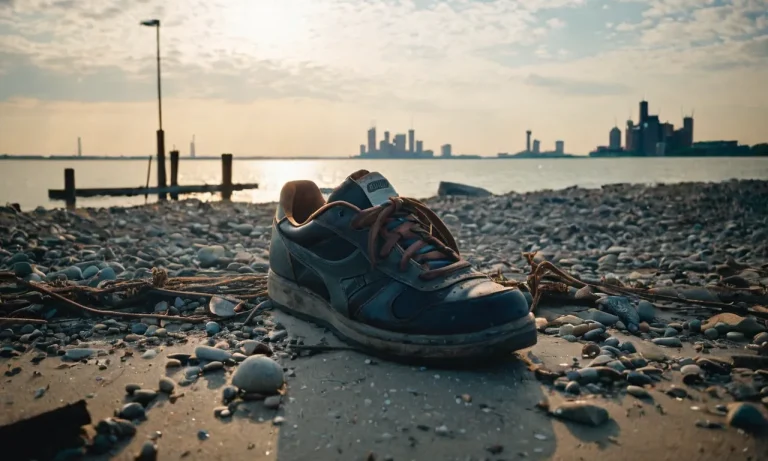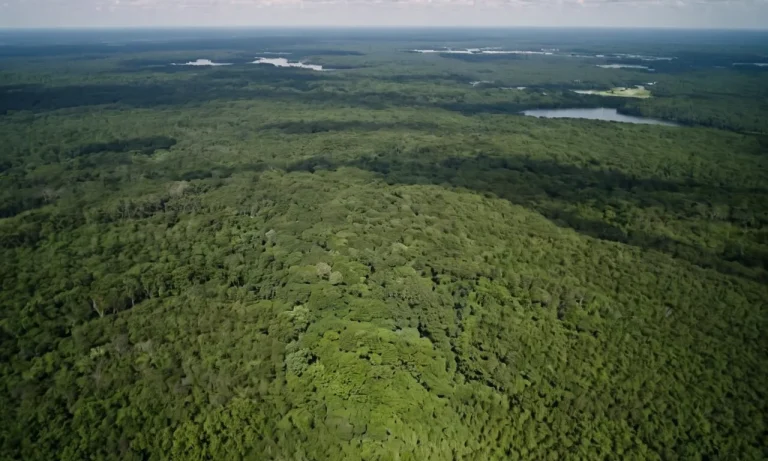Will Key West Be Underwater?
Rising sea levels threaten coastal communities around the world, and Key West, the southernmost point in the continental United States, is no exception. This article explores whether the popular tourist destination of Key West will succumb to rising tides over the coming decades.
If you’re short on time, here’s a quick answer to your question: Current projections estimate that much of Key West could experience daily high tide flooding by 2045 due to sea level rise. While complete inundation is unlikely this century, increasing flood risks may make parts of the island uninhabitable.
Sea Level Rise Projections for Key West
Historic Trends
When discussing the potential impact of sea level rise on Key West, it is essential to consider the historic trends that have shaped this region over time. According to data from the National Oceanic and Atmospheric Administration (NOAA), sea levels have been steadily rising along the Florida coastline, including Key West, over the past century.
Since 1913, Key West has experienced an average sea level rise of approximately 9 inches.
This gradual increase in sea levels can be attributed to a variety of factors, including global warming and the melting of polar ice caps. These factors contribute to the overall rise in sea levels, which in turn poses significant challenges for low-lying coastal communities like Key West.
Future Scenarios
Looking ahead, the projections for sea level rise in Key West are concerning. According to a report published by the Southeast Florida Regional Climate Change Compact, sea levels in the region could rise by as much as 17 to 31 inches by the year 2060, and by 39 to 57 inches by the year 2100.
These projections are based on various factors, including the continued melting of ice caps, thermal expansion of seawater, and the potential acceleration of sea level rise due to climate change. If these scenarios were to unfold, it could have profound implications for the residents, infrastructure, and economy of Key West.
With its low-lying geography and reliance on tourism and fishing industries, Key West is particularly vulnerable to the impacts of sea level rise. Flooding could become more frequent and severe, damaging homes, businesses, and critical infrastructure.
Additionally, the island’s freshwater supply could face contamination from saltwater intrusion, posing a threat to both human health and agricultural activities.
Efforts are underway to mitigate the potential risks associated with sea level rise in Key West. The city has implemented measures such as elevating roads and buildings, constructing sea walls, and implementing stormwater management systems.
However, the long-term sustainability of these measures remains uncertain, given the magnitude of the projected sea level rise.
Impacts on Infrastructure
As the threat of rising sea levels looms over Key West, it is crucial to assess the potential impacts on the city’s infrastructure. Key West, being a low-lying island, is particularly vulnerable to the effects of climate change.
The following subheadings discuss the potential impacts on roads and homes, as well as utilities:
Roads and Homes
One of the most significant concerns regarding rising sea levels in Key West is the potential damage to roads and homes. With the increasing frequency and intensity of storms, the risk of flooding and erosion becomes more pronounced.
This can lead to structural damage and the loss of essential transportation routes. According to a study conducted by the University of Georgia, a 1-foot rise in sea level could result in the inundation of nearly 30% of Key West’s road network, rendering them impassable.
Additionally, many homes in low-lying areas could be at risk of flooding and may require significant investments in mitigation measures or even relocation.
Utilities
The impact on utilities is another critical aspect to consider. Rising sea levels can pose significant challenges to water and wastewater systems, as well as electrical infrastructure. Saltwater intrusion into freshwater sources can contaminate drinking water supplies, affecting the health and well-being of residents.
Additionally, coastal erosion can damage underground utility lines, leading to power outages and disruptions in communication systems. It is vital for the city to invest in resilient infrastructure and develop adaptation strategies to ensure the continuous provision of essential services to its residents.
For more information on the potential impacts of rising sea levels on Key West’s infrastructure, you can visit the official website of the City of Key West. They provide updates on ongoing initiatives and highlight the importance of community engagement in addressing these challenges.
Adaptation Strategies
As the threat of rising sea levels looms over coastal cities like Key West, it becomes crucial to implement effective adaptation strategies to mitigate the potential impacts. Here are some key strategies that can help Key West and other vulnerable areas adapt to the changing climate:
Elevating Structures
One of the most commonly used adaptation strategies is the elevation of structures. By raising buildings and infrastructure above the expected flood levels, communities can protect their valuable assets from inundation.
This approach has been successfully implemented in various coastal cities around the world, including Rotterdam in the Netherlands. The city’s innovative approach to elevating structures has helped it become a global leader in flood management.
Flood Barriers
Flood barriers are another effective adaptation strategy that can be employed in areas prone to flooding. These barriers can be in the form of seawalls, levees, or storm surge barriers, and are designed to prevent water from entering low-lying areas.
For example, the Thames Barrier in London has been instrumental in protecting the city from tidal surges since its completion in 1982. Such barriers can provide a sense of security and buy time for communities to implement other adaptation measures.
Managed Retreat
In certain cases, managed retreat may be the most viable adaptation strategy for areas at high risk of flooding. This involves relocating communities and infrastructure away from vulnerable coastal areas to safer locations.
While it may be a difficult decision to make, managed retreat can ensure the long-term safety and resilience of communities. The concept has been successfully implemented in places like the island of Isle de Jean Charles in Louisiana, where residents are being relocated due to the increasing risks of coastal erosion and sea-level rise.
It is important to note that these adaptation strategies should be implemented in combination with other measures such as land-use planning, coastal ecosystem restoration, and improved stormwater management.
By adopting a holistic approach, Key West and other coastal communities can better prepare and adapt to the challenges posed by rising sea levels.
Economic and Social Consequences
The potential consequences of Key West being underwater extend far beyond just the environmental impact. The economic and social effects would be significant and far-reaching, affecting not only the residents of Key West but also the broader region and the entire state of Florida.
Economic Impact
Key West is a popular tourist destination, known for its beautiful beaches, vibrant nightlife, and unique charm. If the city were to become submerged, it would have a devastating impact on the tourism industry.
Hotels, restaurants, and other businesses that rely on tourism would suffer greatly, leading to job losses and economic decline.
Furthermore, Key West is also home to a number of important industries, including fishing and boating. These industries would be severely impacted by rising sea levels, as the habitats of marine life would change and access to certain areas would become more difficult.
This would not only affect the livelihoods of those directly involved in these industries but also have a ripple effect on related businesses and the local economy as a whole.
The real estate market in Key West would also be greatly affected. As the threat of flooding increases, property values would decline, making it difficult for homeowners to sell their properties. Insurance rates would skyrocket, further burdening homeowners and potentially making it unaffordable for some to live in the area.
Social Impact
The social consequences of Key West being underwater are equally significant. The city has a tight-knit community with a strong sense of identity and culture. The loss of homes, businesses, and landmarks would not only disrupt the physical landscape but also impact the fabric of the community.
Residents would be forced to relocate, leaving behind their homes, schools, and social networks. The displacement of individuals and families would create a sense of upheaval and uncertainty. The loss of neighborhoods and community spaces would also have a profound impact on the social cohesion of the city.
Key West is also home to a diverse population, including a large number of retirees. For many of these individuals, Key West is not just a place to live but a place to enjoy their golden years. Being forced to leave their homes and the lifestyle they have built would be emotionally and psychologically challenging.
It is important to recognize that the potential consequences of Key West being underwater are not limited to just the city itself. The broader region and the state of Florida would also be impacted. Key West is a major contributor to Florida’s economy, and the loss of this vibrant city would have ripple effects throughout the state.
Ultimately, the economic and social consequences of Key West being underwater are grave. It is crucial that we take action to mitigate the effects of climate change and work towards a sustainable future to prevent such a catastrophic outcome.
When Will Key West Be Underwater?
Key West, the southernmost city in the United States, is a popular tourist destination known for its vibrant culture, stunning beaches, and picturesque sunsets. However, with rising sea levels and the increasing threat of climate change, there are concerns about the city’s future.
The question on many people’s minds is: when will Key West be underwater?
The Reality of Rising Sea Levels
According to scientific studies, sea levels have been rising at an alarming rate over the past century. This is primarily due to the melting of polar ice caps and the expansion of seawater as it warms. Key West, being a low-lying island, is particularly vulnerable to the effects of rising sea levels.
Experts predict that by the year 2050, Key West could experience a sea-level rise of up to 15 inches. This may not seem like a significant amount, but even a slight increase can have disastrous consequences for a coastal city like Key West.
The Impact on Infrastructure
If Key West were to become submerged, it would not only be a devastating loss for the city’s residents but also for the economy and tourism industry. Key West generates a significant portion of its revenue from tourism, and if the city were to be underwater, it would mean the loss of jobs and businesses.
In addition, the infrastructure of Key West would be severely impacted by rising sea levels. Roads, bridges, and buildings would be at risk of flooding, leading to widespread damage and potentially making the city uninhabitable.
Efforts to Combat Rising Sea Levels
Recognizing the urgency of the situation, the city of Key West has taken steps to mitigate the effects of rising sea levels. These efforts include implementing stricter building codes, constructing sea walls, and improving drainage systems.
However, it is uncertain whether these measures will be enough to protect the city in the long term.
Furthermore, addressing the issue of rising sea levels requires a global effort. Governments, organizations, and individuals must come together to reduce greenhouse gas emissions and work towards sustainable practices to prevent further damage to our planet.
Conclusion
While inundation this century is unlikely, Key West faces increasing risks from sea level rise and coastal flooding over the coming decades. Adaptation measures can help buy time, but may eventually prove inadequate.
With tourism vital to its economy, the fate of Key West remains deeply intertwined with the surrounding sea.








